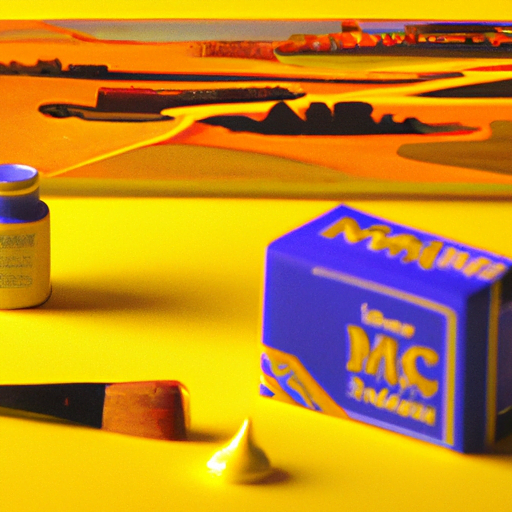
-
Table of Contents
- The Magic of Miniature Art: Designing Small but Impactful Graphics
- The Power of Miniature Art
- Design Principles for Miniature Art
- 1. Simplify and Focus
- 2. Use Contrast and Color
- 3. Pay Attention to Typography
- 4. Embrace Negative Space
- Case Studies: Impactful Miniature Art
- 1. Apple’s App Icons
- 2. Social Media Emojis
- The Impact of Miniature Art in Marketing
- 1. Social Media Graphics
- 2. Packaging Design
- 3. Infographics
- Summary
The Magic of Miniature Art: Designing Small but Impactful Graphics

When it comes to graphic design, size doesn’t always matter. In fact, some of the most impactful and visually stunning designs can be found in miniature art. These tiny graphics have the power to captivate and engage viewers, despite their small size. In this article, we will explore the magic of miniature art and how designers can create impactful graphics on a small scale.
The Power of Miniature Art
Miniature art refers to the creation of small-scale artworks that require intricate details and precision. While it may seem counterintuitive to focus on such small designs, miniature art has a unique ability to draw attention and create a lasting impression. Here are a few reasons why miniature art is so powerful:
- Intriguing and Unexpected: Miniature art often surprises viewers with its level of detail and complexity. When people encounter a small graphic that is meticulously crafted, it piques their curiosity and draws them in.
- Portability and Accessibility: Miniature art can be easily shared and viewed on various platforms, including social media, websites, and mobile devices. Its small size makes it ideal for sharing and consuming on the go.
- Novelty and Uniqueness: In a world saturated with large-scale designs, miniature art stands out as something different and unique. It offers a refreshing change from the norm and captures attention through its novelty.
Design Principles for Miniature Art
Creating impactful miniature art requires careful consideration of design principles. Here are some key principles to keep in mind:
1. Simplify and Focus
With limited space, it’s crucial to simplify your design and focus on the most essential elements. Identify the core message or idea you want to convey and eliminate any unnecessary details. By simplifying your design, you can ensure that it remains clear and impactful, even at a small scale.
2. Use Contrast and Color
Contrast and color play a vital role in creating visually striking miniature art. By using contrasting colors, you can make certain elements stand out and create a sense of depth and dimension. Experiment with different color palettes to find combinations that enhance the impact of your design.
3. Pay Attention to Typography
Typography is a crucial aspect of any design, and it becomes even more important in miniature art. Choose fonts that are legible at small sizes and consider the spacing between letters and lines. A well-executed typography can greatly enhance the overall impact of your miniature design.
4. Embrace Negative Space
Negative space, also known as white space, is the empty space around and between elements in a design. In miniature art, negative space can be used strategically to create balance and draw attention to the main focal point. Embrace the power of empty space and use it to your advantage.
Case Studies: Impactful Miniature Art
Let’s take a look at some real-world examples of miniature art that have made a significant impact:
1. Apple’s App Icons
Apple’s app icons are a prime example of how miniature art can be both visually appealing and functional. Each app icon is a small graphic that represents the purpose of the app. Despite their small size, these icons are instantly recognizable and contribute to the overall user experience of Apple’s devices.
2. Social Media Emojis
Emojis have become an integral part of our digital communication, and they are a perfect example of miniature art. These tiny graphics convey emotions and ideas in a simple and universally understood way. Emojis have revolutionized the way we express ourselves online, proving that even the smallest designs can have a significant impact.
The Impact of Miniature Art in Marketing
Miniature art has found its place in the world of marketing, where it can be used to create memorable and impactful campaigns. Here are a few ways in which miniature art can be leveraged for marketing purposes:
1. Social Media Graphics
Social media platforms provide an excellent opportunity to showcase miniature art. Whether it’s a small graphic accompanying a post or a thumbnail image for a video, miniature art can capture attention and encourage engagement. Its small size makes it easy to share and increases the likelihood of it being noticed in a crowded social media feed.
2. Packaging Design
Miniature art can be a game-changer in packaging design. By incorporating small but impactful graphics on product packaging, brands can create a memorable and visually appealing experience for consumers. Miniature art on packaging can also convey important information or highlight key features of the product.
3. Infographics
Infographics are a popular way to present complex information in a visually appealing and easy-to-understand format. By using miniature art in infographics, designers can condense large amounts of data into small, digestible graphics. This not only makes the information more accessible but also increases the likelihood of it being shared and remembered.
Summary
Miniature art has a unique ability to captivate and engage viewers despite its small size. By simplifying designs, using contrast and color effectively, paying attention to typography, and embracing negative space, designers can create impactful miniature art. Real-world examples such as Apple’s app icons and social media emojis demonstrate the power of miniature art in creating memorable and functional designs. In marketing, miniature art can be leveraged through social media graphics, packaging design, and infographics to create impactful campaigns. So, next time you’re designing graphics, remember that size doesn’t always matter, and the magic of miniature art can leave a lasting impression.
